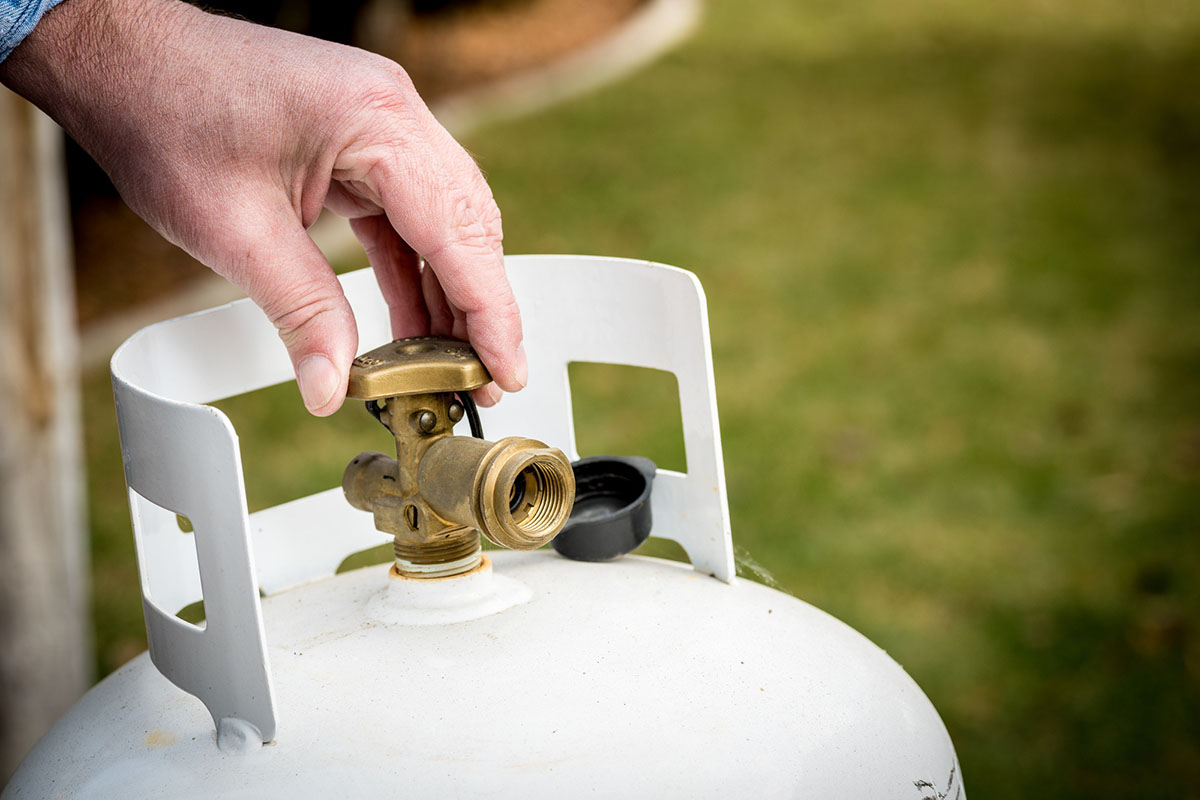Propane gas fireplaces are popular choices for homeowners looking to enjoy the warmth and ambiance of a fireplace without the hassle of traditional wood-burning setups.
If you’re considering a propane fireplace, you might be wondering, “How much propane does a fireplace use?”
In this article, we will explore the factors that influence propane consumption and provide tips to optimize usage, along with a comparison of propane fireplaces to gas fireplaces and other heating options.
How Propane Fireplace Work
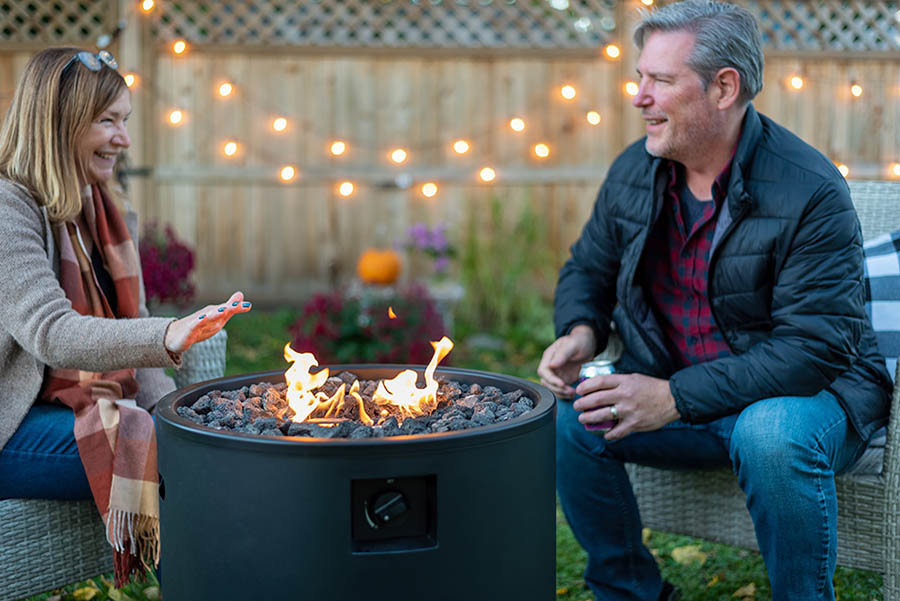
Propane fireplace insert functions by burning propane gas to produce heat and creates the comforting glow of a real fire. Understanding the efficiency factors that contribute to reduced propane consumption is essential for a cost-effective heating solution.
What Makes a Propane Fireplace Efficient?
Propane gas fireplaces are designed to burn fuel efficiently, converting a higher percentage of propane into usable heat compared to other heating options. Features such as direct venting and adjustable heat settings help regulate propane usage based on your heating needs.
Converting a Wood-Burning Fireplace to Propane
Converting a wood-burning fireplace to propane offers homeowners a plethora of advantages, making it an attractive option for those seeking a cleaner, more convenient, and more efficient heating solution.
With this transformation, the need for handling wood fire and dealing with ash cleanup becomes a thing of the past, providing a hassle-free and eco-friendly heating experience.
Propane fireplaces offer greater control over heating levels with adjustable settings and electronic ignition, ensuring optimal comfort and ambiance.
By embracing all the heat, warmth, and efficiency of a propane fireplace, homeowners can bid farewell to the challenges of wood-burning setups and enjoy a cozy and environmentally conscious heating solution.
How to Light a Propane Fireplace
Properly lighting a propane gas fireplace ensures optimal efficiency and safety during operation. Most propane fireplaces come with an electronic ignition system, making the process simple and hassle-free.
Follow the manufacturer’s instructions to ignite the flames safely and enjoy your propane fireplace.
How Much Propane Does a Fireplace Use Per Day?

The amount of propane a fireplace uses per day depends on various factors. One key consideration is the size of the fireplace and its BTU (British Thermal Unit) rating, which indicates the heating capacity.
Larger fireplaces with higher BTU ratings tend to consume more propane.
Factors Affecting Propane Consumption
Several factors influence the gallon of propane consumption in a fireplace. The frequency and duration of propane fireplace use play a significant role, as does the insulation and energy efficiency of your home.
The outdoor temperature can also affect how much propane a fireplace use to maintain a comfortable indoor temperature.
How Much Propane Does It Cost to Run a Fireplace?
To manage your heating expenses effectively, it’s crucial to determine how much it costs to run a propane fireplace.
The cost of propane varies based on location and market conditions, but you can calculate the approximate cost per hour of a propane fireplace runs in operation based on the propane price and BTU rating of your existing fireplace itself.
Comparing Propane and Gas Fireplaces
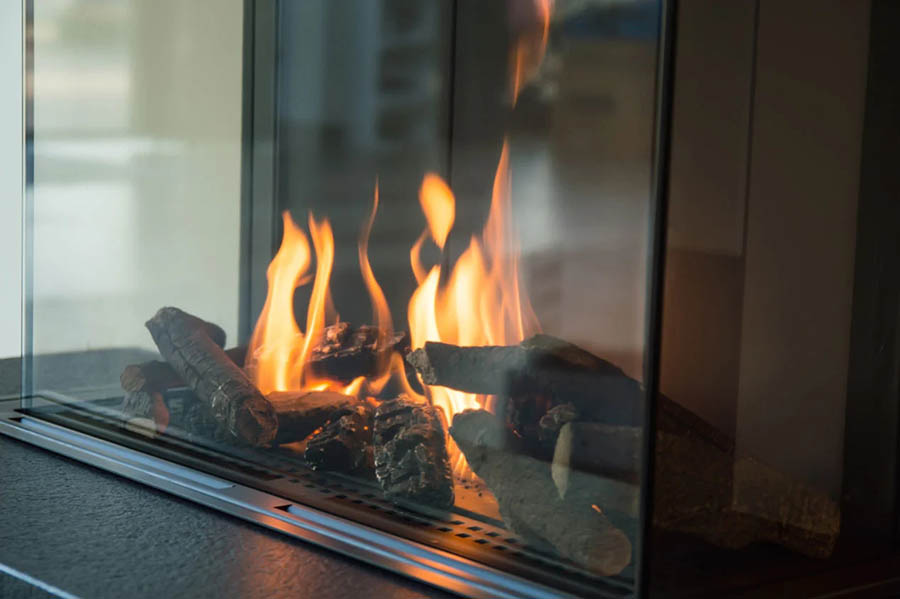
When choosing between a propane fireplace and a gas fireplace, it’s essential to consider their efficiency, cost, heating performance, and coverage. Let’s explore the differences between these two heating options:
Efficiency and Cost of Propane Fireplace vs. Gas Fireplace
Propane fireplaces and gas fireplaces both offer efficient heating solutions, but they differ in terms of fuel and cost. Propane fireplaces burn propane gas, which is stored in tanks, while gas fireplaces utilize a natural gas supply connected to the home’s utility lines.
Efficiency: Propane fireplaces tend to have higher BTU ratings, providing more heat output compared to gas fireplaces. This means propane fireplaces can heat a room more quickly and effectively.
Cost: The cost of newer propane fireplaces may fluctuate more than natural gas, which can impact long-term expenses. Natural gas is generally more stable in price, making gas fireplaces potentially more cost-effective in the long run.
Heating Performance and Coverage
Heating Performance: Both propane and gas fireplaces can effectively heat indoor spaces, providing a comfortable and cozy environment during colder months. Propane gas fireplace insert offers the advantage of higher BTU ratings, delivering more warmth in larger rooms or open living spaces.
Coverage: The coverage area of a fireplace depends on its BTU rating and heating capacity. Larger fireplaces with higher BTU ratings can heat more significant areas, while smaller fireplaces may be suitable for single rooms or smaller spaces.
In summary, propane fireplace insert offers higher heat output and efficiency compared to gas fireplaces. However, gas fireplaces may have more stable long-term costs due to the consistent pricing of natural gas.
Both options provide effective heating performance, and the choice depends on your heating needs, preferences, and access to fuel sources.
Tips for Optimizing Propane Usage
To make the most of your propane fireplace while managing heating costs, consider implementing these practical tips:
Maintaining and Inspecting the Fireplace Regularly
Regular maintenance and inspections are crucial for ensuring your propane fireplace operates efficiently and safely.
- Clean the Fireplace: Regularly clean the fireplace, including the burner, logs, and glass doors, to remove dust and debris that can affect its performance.
- Check for Leaks: Inspect the propane connections and hoses for any signs of leaks or damage. Address any issues promptly to prevent gas wastage and ensure safety.
- Schedule Professional Maintenance: Arrange for annual maintenance by a qualified technician to clean and service the safe propane fireplace thoroughly.
Using Thermostats and Timers for Efficient Heating
Thermostats and timers are effective tools for controlling propane usage and maintaining optimal comfort.
- Set the Thermostat Correctly: Adjust the thermostat to a comfortable temperature, and avoid overheating the room unnecessarily.
- Programmable Thermostats: Use programmable thermostats to automatically adjust the temperature based on your daily schedule, reducing propane consumption during periods of low occupancy.
- Utilize Timers: Set timers to turn off the fireplace after a specific duration, especially when you plan to leave the room or go to bed.
Supplementing with Alternative Heating Methods
Supplementing your propane fireplace with alternative heating methods can help conserve propane, particularly during milder weather.
- Use Space Heaters: Use electric space heaters in specific areas of the home to provide localized warmth without relying solely on the fireplace.
- Layer Clothing and Use Blankets: Dress in layers and use blankets to stay warm without relying heavily on the fireplace for heating.
- Consider Zone Heating: If you have multiple heating zones in your home, focus on heating only the occupied areas with the fireplace and alternative heaters.
By incorporating these tips into your daily routine, you can optimize propane usage, reduce heating expenses, and enjoy a cozy and efficient heating experience with your propane fireplace.
Regular maintenance ensures wood fire begins its proper function, while thermostats, timers, and alternative heating methods offer added control and comfort, providing a pleasant and cost-effective fireplace experience.
Safety Tips for Operating Propane Fireplaces
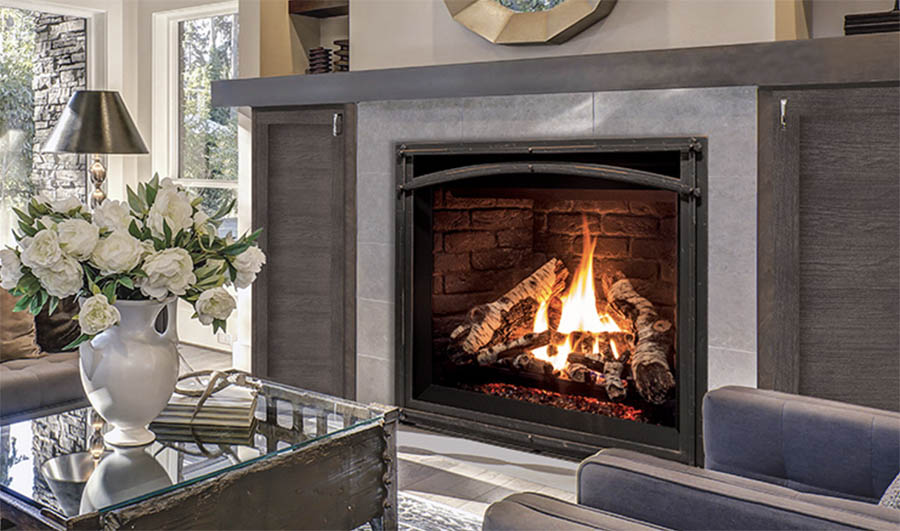
Propane fireplaces provide a warm and cozy atmosphere, but safety should always be a top priority when operating them. Here are some essential safety tips to follow:
- Read the Manufacturer’s Manual: Familiarize yourself with the fireplace’s user manual and follow all safety guidelines provided by the manufacturer.
- Ventilation: Ensure proper ventilation by keeping the vents and flue clean and unobstructed. Proper ventilation prevents the buildup of carbon monoxide, a potentially dangerous gas.
- Carbon Monoxide Detector: Install a carbon monoxide detector near the fireplace and regularly check its batteries to ensure it’s functioning correctly. Carbon monoxide is colorless and odorless, making a detector essential for early detection.
- Keep Combustible Items Away: Keep flammable objects such as curtains, furniture, and paper away from the fireplace to avoid accidental fires.
- Supervise Children and Pets: Always supervise children and pets when the propane fueled fireplace is in use. A safety screen or gate can provide an additional barrier to keep them away from hot surfaces.
- Use Safety Screens: Utilize safety screens to prevent embers and sparks from escaping the fireplace, reducing the risk of accidental burns or fires.
- Check Propane Connections: Regularly inspect the propane connections and hoses for any signs of leaks or damage. If you detect a propane odor or suspect a leak, turn off the propane fueled fireplace
immediately and contact a professional for inspection and repairs. - Proper Propane Storage: If you store extra propane tanks outdoors, keep them in an upright position and away from ignition sources or direct sunlight.
- Turn Off Before Leaving: Always turn off the safe propane fireplace before leaving the room or going to bed.
- Regular Maintenance: Schedule annual maintenance by a qualified technician to ensure the fireplace is in good working condition and safe to use.
Is It Safe to Leave a Propane Fireplace On Overnight?
While a brand new propane fireplace is designed with safety features, it’s generally not recommended to leave it on overnight or unattended. Even with safety measures in place, unexpected issues can arise, and it’s essential to prioritize safety.
Leaving a propane fireplace on overnight can lead to potential hazards such as:
- Carbon Monoxide Buildup: Continuous operation without proper ventilation can cause carbon monoxide to accumulate in the room, posing health risks.
- Fire Hazards: In the event of a gas leak or malfunction, leaving the fireplace on overnight increases the risk of a fire hazard.
To ensure safety, warm air, and conserve propane, it’s advisable to turn off the fireplace before going to bed or when leaving the room for an extended period. If you need additional heat during the night, consider using other heating methods, such as electric blankets or space heaters, which are designed for safe overnight use.
Estimating Propane Costs
Understanding the costs associated with propane usage is essential for budgeting and managing your heating expenses effectively.
How Much Does It Cost to Fill Up a 100-Pound Propane Tank?
The cost of filling up a 100-pound propane tank for your fire pit can vary based on the current propane price in your area. On average, the cost to fill a 100-pound propane tank can range from $50 to $100 or more.
However, it’s essential to check with your local propane supplier for the most up-to-date pricing.
Calculating Propane Cost for a Season
To estimate propane costs for an entire heating season, consider the following factors:
- Propane Usage: Calculate the average propane consumption of your fireplace per hour or day. This information can usually be found in the fireplace’s user manual or by consulting a professional.
- Heating Hours: Estimate the number of hours you expect to use the fireplace daily during the heating season.
- Seasonal Duration: Determine the number of months you plan to use the fireplace for heating.
- Propane Price: Check the current propane price per gallon from your local propane supplier.
Once you have these figures, you can calculate the estimated propane cost per one gallon for the season using the formula:
Estimated Propane Cost = (Propane Usage per Hour or Day) x (Heating Hours per Day) x (Number of Months) x (Propane Price per Gallon)
Keep in mind that propane prices can fluctuate throughout the season, so it’s advisable to monitor the prices regularly and adjust your estimates accordingly.
How Propane Fireplaces Compare to Other Heating Options
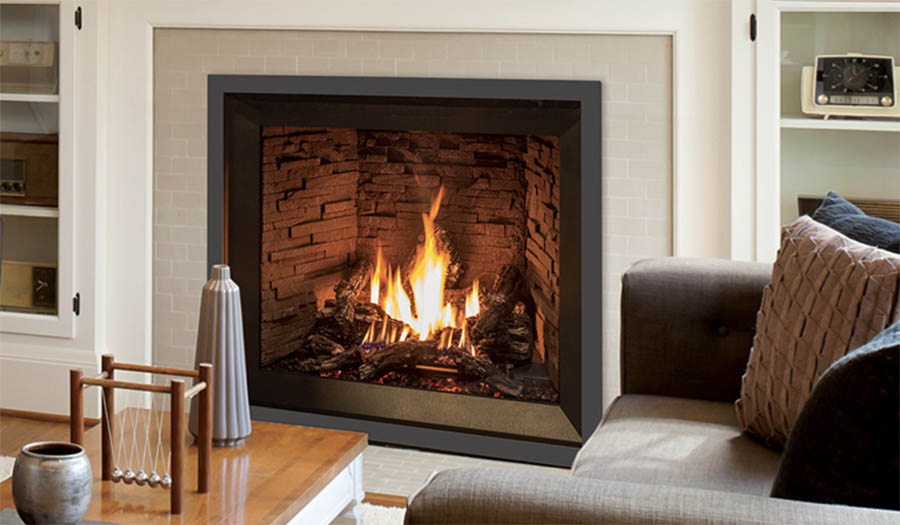
New propane fireplace offers a range of benefits when compared to other heating options, such as electric fireplaces and wood-burning fireplaces.
Propane Fireplaces vs. Electric Fireplaces
- Efficiency: Propane fireplaces are generally more efficient in providing heat compared to electric fireplaces. While electric fireplaces have low operating costs, propane fireplaces can produce more heat and offer a more authentic flame.
- Independence from Electricity: Propane fireplaces do not rely on electricity, making them a reliable heating source during power outages.
- Ambiance: Propane fireplaces offer a realistic flame, creating a cozy and inviting atmosphere similar to wood-burning fireplaces, while electric fireplaces may lack the same ambiance.
Propane Fireplaces vs. Wood-Burning Fireplaces
- Cleanliness and Convenience: A propane fireplace produces minimal emissions and requires little maintenance, unlike wood burning fireplace that involves handling wood, cleaning ashes, and producing smoke.
- Efficiency: Propane fireplace has higher heating efficiency, as wood burning fireplace loses a significant amount of heat through the chimney.
- Environmental Impact: Propane fireplace insert emit fewer pollutants compared to a wood fireplace, contributing to better air quality and reduced environmental impact.
- Safety: Propane fireplaces offer better safety, with no sparks or risk of embers escaping the fireplace.
In summary, a natural gas fireplace provides efficient heating, convenience, and a pleasant ambiance built-in fireplaces, making them a compelling choice compared to electric and wood-burning fireplaces.
They strike a balance between cost-effectiveness, environmental considerations, and comfort, offering a valuable heating solution for homeowners.
Pros and Cons of Propane Fireplaces
Propane fireplaces offer several benefits as well as certain considerations that homeowners should be aware of before making a decision. Let’s explore the advantages and potential drawbacks of using a propane fireplace:
Advantages of Using a Propane Fireplace
- Clean and Convenient: Propane fireplace produces minimal emissions and do not release soot or ash like wood-burning fireplace. They are easy to operate, often equipped with remote controls or thermostats for effortless control.
- Efficient Heating: Propane fireplace provides consistent and efficient heat output. They can quickly warm up a room, making them an excellent source of supplemental or primary heating.
- Independence from Electricity: Unlike electric fireplaces, propane fireplaces do not rely on electricity. This means they can still operate during power outages, ensuring continued warmth and comfort.
- Realistic Flames: Propane fireplace can replicate the ambiance of a traditional wood-burning fireplace with realistic flames, adding a cozy and inviting atmosphere to your home.
- Flexibility in Installation: Propane fireplace can be installed in various locations within a home, including rooms where it may be challenging to have a wood-burning fireplace.
- Reduced Environmental Impact: Propane is considered a relatively clean-burning fuel, emitting fewer greenhouse gases and particulate matter compared to wood-burning fireplace.
Potential Drawbacks and Considerations
- Propane Costs: The cost of propane can fluctuate based on market conditions and demand. While propane fireplace is generally efficient, homeowners should be mindful of their propane usage to manage heating expenses.
- Propane Tank Storage: Propane fireplace requires a propane tank for fuel storage, which needs sufficient space outdoors. Homeowners must also ensure proper maintenance and safety measures for the tank.
- Initial Installation Costs: Installing a propane fireplace may involve upfront costs for the unit, venting system, and professional propane fireplace installed. However, these costs can often be recouped over time through energy savings.
- Carbon Monoxide Concerns: Like any fuel-burning appliance, propane fireplaces produce carbon monoxide. To ensure safety, it’s essential to have a functional carbon monoxide detector and proper ventilation.
- Availability in Rural Areas: In remote or rural areas, accessing propane delivery services may be more challenging, potentially leading to longer wait times for refills.
- Environmental Considerations: While propane has a lower environmental impact compared to some other fossil fuels, it is not entirely carbon-neutral. Homeowners seeking more eco-friendly options may consider renewable energy sources.
It’s essential to weigh these pros and cons based on your specific needs, preferences, and local circumstances when deciding whether a propane fireplace is the right choice for your home.
Consulting with a professional before your propane fireplace is installed. They can provide valuable insights and help you make an informed decision.
Conclusion
In conclusion, a propane fireplace offers a clean, efficient, and convenient heating solution with realistic flames that add a cozy ambiance to any home. They provide independence from electricity and are versatile in installation.
However, homeowners should consider propane costs, storage requirements, and safety measures.
By optimizing usage and seeking propane professional advice, you can enjoy the warmth and comfort of a gas fireplace while managing heating expenses effectively. Embrace the eco-friendly benefits and create cherished memories around its comforting glow.

